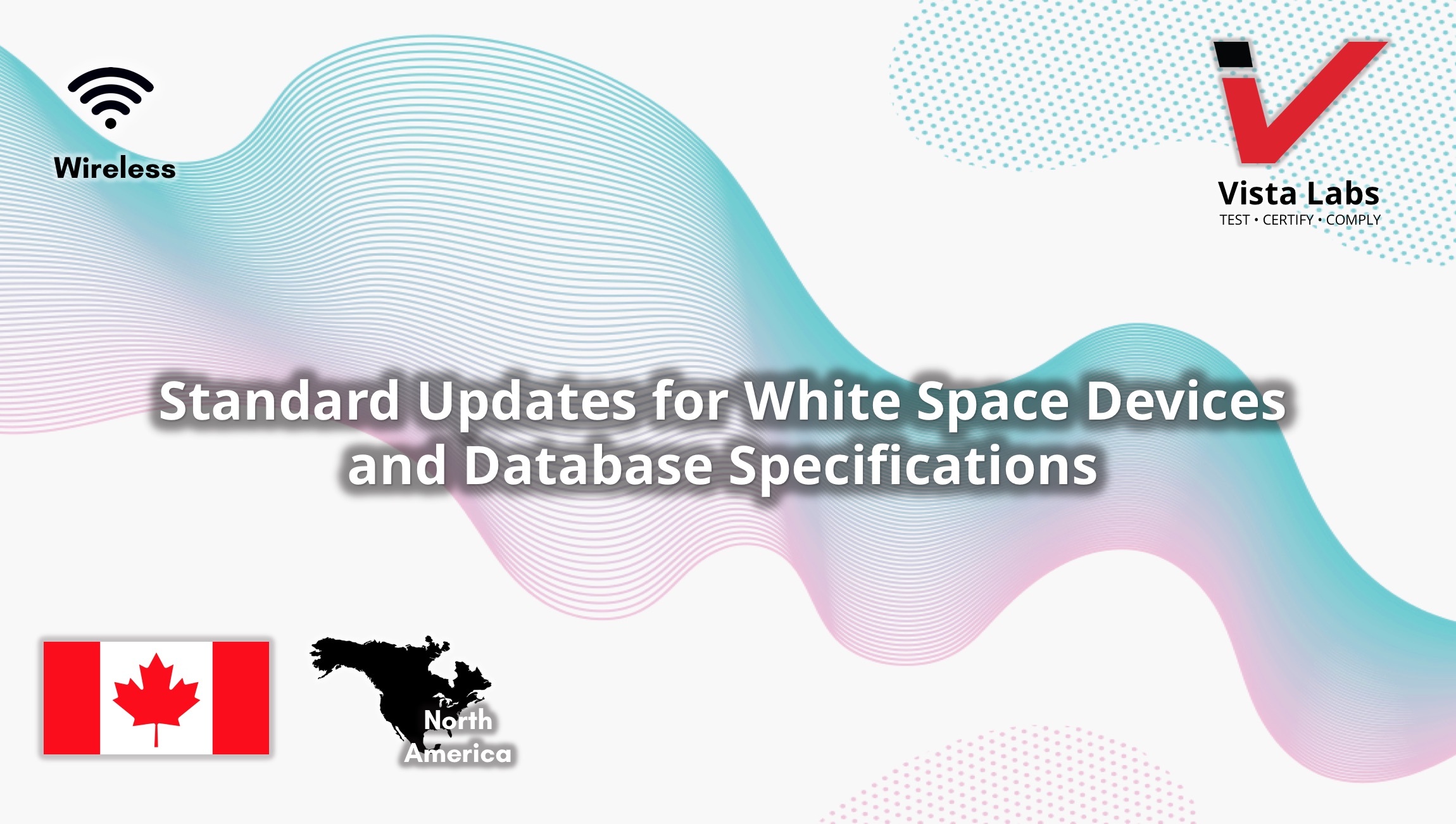The Ministry of Innovation, Science and Economic Development of Canada opens consultation for RSS-222, Issue 2, White Space Devices (WSDs) and DBS-01, Issue 2, White Space Database Specifications.
- Radio Standards Specification RSS-222, Issue 2, White Space Devices (WSDs), sets out the certification requirements for licence-exempt, radio apparatus operating in the frequency bands 54-72 MHz, 76-88 MHz, 174-216 MHz, 470-608 MHz and 657-663 MHz, known as white space devices (WSDs).
- DBS-01, Issue 2 White Space Database Specifications, sets out the technical requirements for the designation of a database capable of identifying available channels for use by white space devices in the white space frequency bands (i.e. 54-72 MHz, 76-88 MHz, 174-216 MHz, 470-608 MHz and 657-663 MHz).
The following are the list of changes in RSS-222, Issue 2:
- The sections on RSS-102 (for radio frequency exposure) and RSP-100 (requirements for the certification of radio apparatus) have been removed since these documents are normative references in RSS-Gen.
- White space frequency bands have been revised based on the Decision on the Technical and Policy Framework for White Space Devices.
- Additional e.i.r.p. and associated conducted power limits, power spectral densities and conducted adjacent channel emission limits have been included for fixed white space devices.
- New sections have been included to address certification and licensing requirements.
- Channel bonding requirements have been clarified and additional requirements prescribed.
- Definition for less congested areas has been added.
- A transition period has been included for the certification of WSDs(White Space Devices).
- The measurement section on multiple antennas has been removed since the measurement method is defined in ANSI C63.10, American National Standard for Testing Unlicensed Wireless Devices (referenced in RSS-Gen, General Requirements for Compliance of Radio Apparatus)
- A confidence level associated with the uncertainty of the geo-location accuracy has been prescribed.
- The description of alternate geo-location determination (other than GPS) must be included in the test report.
- A dependency requirement for the power level of a mode I personal/portable device has been added when the controlling device is limited to 40 mW.
- Additional editorial changes and clarifications have been made, as appropriate.
Effective six (6) months from the date of publication, ISED will no longer accept applications for the certification of new WSDs complying with RSS-222, issue 1 (available upon request by email).
After this period, applications for the certification of new WSDs demonstrating compliance with issue 2 of RSS-222 shall be accepted.
The following are the list of changes in DBS-01, Issue 2:
- White space frequency bands have been revised based on the Decision on the Technical and Policy Framework for White Space Devices.
- In addition to the list of available channels, the WSDB will also provide the associated maximum power levels on which a WSD may operate.
- Editorial changes and clarifications have been made to improve the standard.
- Definition for less congested areas has been added.
- The use of the terms “Television White Space (TVWS)” has been revised to “White Space (WS)”. This reflects the expanded and more general use of spectrum beyond the former TV spectrum.
- Updated the tables of separation distances between WSDs and TV protected contours to facilitate the operation of WSDs’ power levels up to 10 Watts Equivalent Isotropic Radiated Power (e.i.r.p.), and for various power levels below 4 Watts e.i.r.p. The separation distances have also been revised to address separation distances for antenna height below 30 m (outside the F curve range).
- Allow a higher effective height above average terrain (EHAAT), directional height above average terrain (dirHAAT) and antenna height above ground level (AGL). The separation distances have been revised in light of those changes.
- A transition period has been defined to facilitate the transition from DBS-01 issue 1 requirements to DBS-01, issue 2 requirements.
- The separation distances must now include the difference of geo-location’s uncertainty if above the reference ±50 m uncertainty.
Within six months from the date of publication of this standard, a WSDBA having an existing WSDB designation from ISED shall submit an application to ISED demonstrating compliance with the current issue of this standard.
Upon receipt of the application, ISED will review and assess compliance with the current issue of this standard. In order to maintain its designation, the WSDBA shall be required to take satisfactory corrective measures, as identified and within the timeline set out by ISED.



